|
|
CRETE
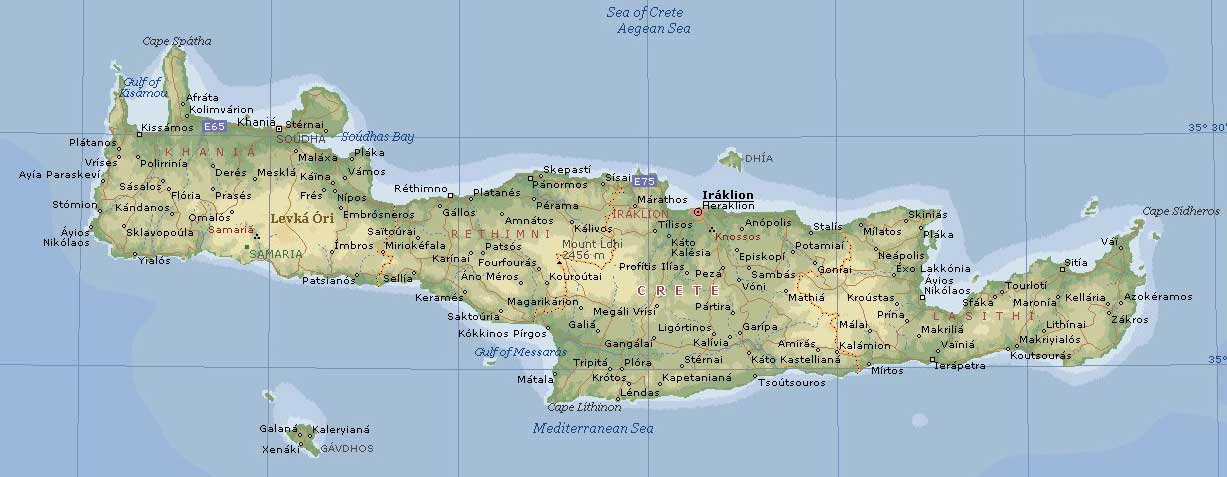
Crete is the largest island in
Greece, and the fifth largest in the Mediterranean Sea. Here,
the visitor can admire the remnants of brilliant civilizations,
explore glorious beaches, as well as impressive mountains,
fertile valleys and steep gorges. The visitor can also become
part of the island’s rich gastronomic culture. Crete is, after
all, a small universe full of beauties and treasures that you
will probably need a lifetime to uncover!
Crete is divided into four
prefectures.
Chania
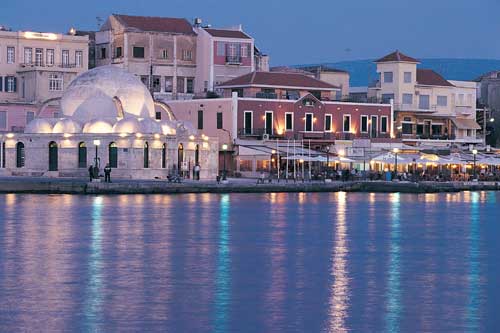
The region of Chania (Haniá), on the western side of the island,
is dominated by the impressive White Mountains (in Greek: Lefká
Óri) and the famous National Park. They occupy the largest part
of the region.The Prefecture of Chania provides tourist services
and activities of all kinds. The city of Chania maintains
unaltered all of its characteristics from the time of the
Venetian Rule up until today.
Rethymno
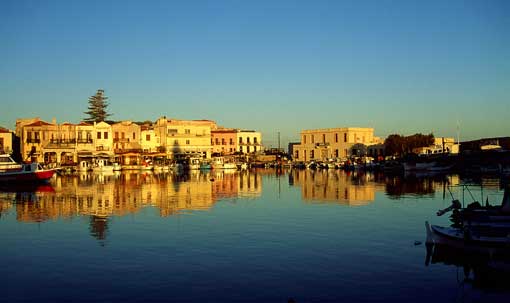 The Rethymno (Réthymno) region:
Crete's smallest prefecture located between White Mountains and
Mt Psilorítis (also called “Ídi”), is synonymous with gorgeous
mountainscapes, marvellous beaches, Cretan lyre melodies, the
tsikoudiá spirit served with “oftó”, legendary caves, historic
monasteries and monuments, traditional mountain villages and
luxurious holiday resorts. Feel the essence of Mythical Crete in
this mountainous, remote and self-sufficient region of the
island of Crete. The Rethymno (Réthymno) region:
Crete's smallest prefecture located between White Mountains and
Mt Psilorítis (also called “Ídi”), is synonymous with gorgeous
mountainscapes, marvellous beaches, Cretan lyre melodies, the
tsikoudiá spirit served with “oftó”, legendary caves, historic
monasteries and monuments, traditional mountain villages and
luxurious holiday resorts. Feel the essence of Mythical Crete in
this mountainous, remote and self-sufficient region of the
island of Crete.
Heraklion
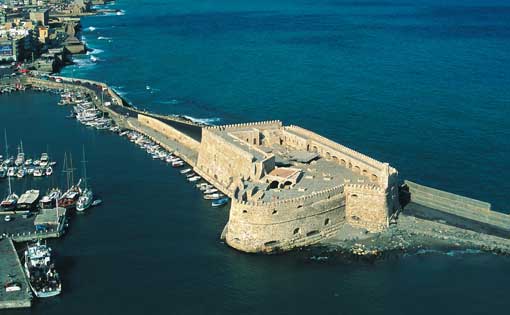 The largest and most densely
populated region on the island of Crete is Heraklion (Iráklion).
Nestling picturesquely among two imposing mountain ranges – Ídi
(Mt Psiloritis) to the west and Dikti (Lasithiótika mountains)
to the east– Iráklion boasts exceptional archaeological
treasures, significant coastal settlements, a series of
picturesque villages, vast valleys with olive groves and
vineyards as well as the best organised tourist infrastructure
in Crete. A unique combination of urban scenery and natural
wealth makes the region of Iráklion an appealing all-year-round
destination. The largest and most densely
populated region on the island of Crete is Heraklion (Iráklion).
Nestling picturesquely among two imposing mountain ranges – Ídi
(Mt Psiloritis) to the west and Dikti (Lasithiótika mountains)
to the east– Iráklion boasts exceptional archaeological
treasures, significant coastal settlements, a series of
picturesque villages, vast valleys with olive groves and
vineyards as well as the best organised tourist infrastructure
in Crete. A unique combination of urban scenery and natural
wealth makes the region of Iráklion an appealing all-year-round
destination.
Lasithi
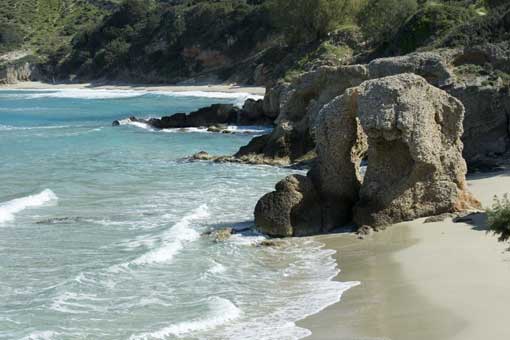 The Lasithi (Lassíthi) region. This
is the easternmost and least mountainous region of Crete, where
the population resides in four semi-urban centers: Áyios
Nikólaos, Ierápetra, Sitía and Neápoli. The mythical palm tree
forest of Váď, the Gulf of Mirabello, the windmills on the
Plateau of Lassíthi (the largest in Crete), beaches lapped by
crystalline water, beautiful cities and luxurious hotel resorts
all make up a rather fascinating world. The Lasithi (Lassíthi) region. This
is the easternmost and least mountainous region of Crete, where
the population resides in four semi-urban centers: Áyios
Nikólaos, Ierápetra, Sitía and Neápoli. The mythical palm tree
forest of Váď, the Gulf of Mirabello, the windmills on the
Plateau of Lassíthi (the largest in Crete), beaches lapped by
crystalline water, beautiful cities and luxurious hotel resorts
all make up a rather fascinating world.
More about Crete
Because of its geographical position
between Africa, Europe, and Asia Minor and because of its mild
climate, Crete became a center of culture as early as Neolithic
times. The first prehistoric settlements appeared in Crete
around 6000 BC while in 2600 BC settlers who knew how to craft
bronze arrived in Crete. It was then that the illustrious course
of the Minoan Civilization began, reaching its peak around 1950
BC with the erection of the imposing palaces in Knossos, Faistos,
and Malia.
Mythology has it that it was in a
cave of Crete where the goddess Rhea hid the newborn Zeus. In
that cave, Zeus was brought up by the nymphs while the demonical
Kouretes would strike their shields loudly so that Cronus would
not hear the crying of the baby Zeus and eat him. It was also to
Crete that Zeus, disguised as a bull, took Europa so that they
could enjoy their love together. Their union produced a son,
Minos, who ruled Crete and turned it into a mighty island empire
of the seas. In Minoan times, even Attica would pay a tribute
tax to Crete, until Theseus, the Athenian prince, killed the
Minotaur. The truth behind the myth is the existence of a mighty
and wealthy kingdom and of a civilisation that is considered the
most ancient one on the European continent.
In 1450 BC and again in 1400 BC the
Minoan Civilization was successively devastated, possibly
because of the eruption of the volcano of Thera, and this
eventually led to its decline. In the wake of the devastation
the Dorians arrived to settle on the island. They were later
followed by the Romans. After the Roman rule, Crete becomes a
province of Byzantium until the arrival of the Arabs who
occupied the island for an entire century (824-961 BC). During
the Arab domination, Crete became the lair of pirates who were
based at Handakas, present day Heraklion.
Next, Crete fell under Byzantine
rule again until the arrival of the Venetians who occupied the
island for approximately 5 centuries, leaving their stamp on the
island’s culture. After the fall of Handakas in 1669, the
Turkish Occupation became marked by ferocious and bloody
uprisings. At the end of the 19th century Turkish rule came to
an end. The Cretan State was created with the King of Greece as
the island’s High Commissioner. In 1913, Crete was finally
joined officially with Greece.
from
http://www.visitgreece.gr
Download
HERE a large pdf map of Crete
|
A visitor to
Crete can admire the remnants of brilliant civilisations,
explore glorious beaches, as well as impressive mountains,
fertile valleys and steep gorges.
|
|